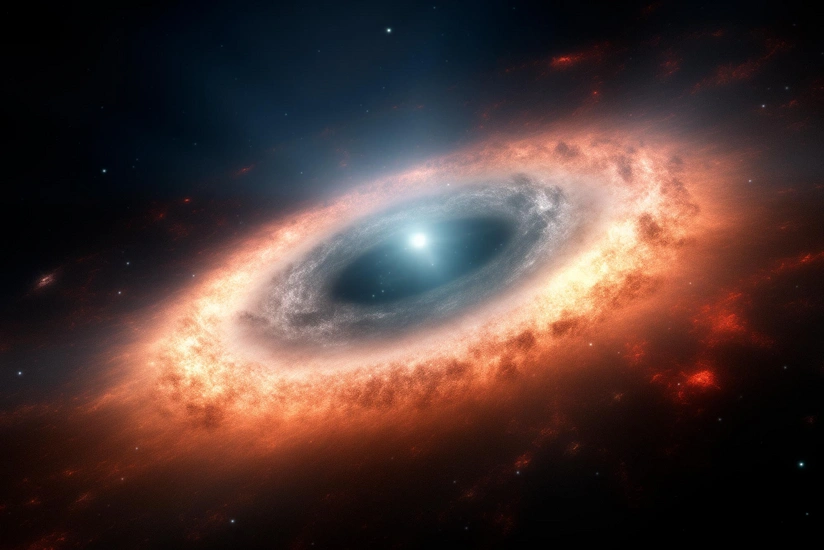A probable Keplerian disk feeding an optically revealed massive young star
- 07 December, 2023
- 09:01

The canonical picture of star formation involves disk-mediated accretion, with Keplerian accretion disks and associated bipolar jets primarily observed in nearby, low-mass young stellar objects (YSOs), Nature said, Report informs.
At a distance of 50 kpc, the Large Magellanic Cloud (LMC) is a convenient environment for searching for the extragalactic counterparts of the accreting MYSOs known in the Milky Way. For example, there is the recent detection of subparsec-scale molecular outflows, as well as the discovery of HH 1177, a collimated bipolar jet driven by an MYSO.
Although the detection of a molecular outflow from a forming star does not necessarily imply the presence of an accretion disk, collimated jets are generally taken as clear signposts for ongoing disk accretion. To date, there has been no direct detection of a rotating circumstellar Keplerian (accretion) disk or toroid in an external galaxy, making the HH 1177 star/jet system an ideal target to search for these. The Atacama Large Millimeter Array (ALMA) now enables the high-sensitivity and high-angular-resolution observations needed to detect and resolve rotating circumstellar gas in extragalactic MYSOs.
